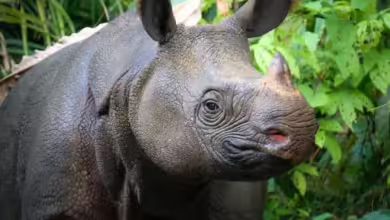China Permits Tiger Trade
China Permits Tiger Trade
International Investigators Charge That China Is Quietly Allowing Trade In Tigers Skins
The Environmental Investigation Agency (EIA), a London-based international wildlife-trafficking fact-gathering organization, is sounding the alarm over the Chinese government’s apparent relaxation of prohibitions against the sale of tiger skins. Commercialization of tigers, a rapidly vanishing Endangered species, is forbidden by international agreement.
China’s actions are crucial to tiger conservation. Because China is the world’s largest market for tiger products, survival of the remaining wild tigers depends on that country’s willingness to educate its population about tiger conservation, as well as to enforce anti-trafficking laws—both its own, and those agreed upon by the international community.
Among the hundreds of animal species in danger of going extinct in the near future, tigers have attracted more international attention than most. Nonetheless, population numbers of all tiger subspecies continue to dwindle: Currently, there are approximately 3,200 tigers remaining in the wild. Well over 100,000 tigers roamed a number of Asian habitats in the early to mid-20th century.
Although trade in tiger parts is illegal in China, in 2007, the Chinese government created an exception for registered and labeled tiger and leopard skins of “legal origin.” However, only recently has the EIA found evidence of actual, “legal” trade of tiger skins being conducted in China.
According to a recent EIA announcement, “Although previously committing to end trade in the parts of Asia’s big cats it appears China has resumed trade in tiger and leopard skins via the implementation of its 2007 Skin Registration Scheme.
“The Scheme allows for tiger and leopard skins from ‘legal origins,’ including those from captive-bred big cats, to be registered, labeled and sold; EIA believes this provides the perfect cover for illegal skins to be laundered and seriously undermines China’s promise to last November’s International Tiger Summit in St Petersburg by re-opening trade at a time when the rest of the world is seeking to end it.
“And EIA has already discovered several examples of skins for sale online, which appear to have formal permits.”
Currently, around 6,000 tigers are kept at several “tiger farms” around China. Investigators from the EIA and other conservation organizations have long reported a thriving illegal commerce in tiger skins, bones, organs, and other parts that often is only half-heartedly discouraged by Chinese authorities. Some wealthy Chinese people enjoy eating tiger meat and organs in exclusive restaurants. In addition, tiger parts are also used to make a variety of popular Chinese folk medicines. China’s consumption of all sorts of tiger parts has climbed steeply over the last decade as more Chinese people have gained affluence and the ability to afford the exotic and costly products.
Chinese officials have suggested that legalizing the sale of the country’s farmed tigers might remove the incentive for wildlife poachers in tiger-range countries to kill wild tigers for sale in China. However, most tiger conservationists vehemently disagree, saying that a legal domestic market for tigers in China would make it easier for black marketeers to “launder” their wild-killed animals by selling them as farm-raised. In addition, conservationists fear that, even with a market awash in abundant farm-raised tiger parts, many Chinese connoisseurs will continue to prefer wild-killed tigers because of the natural “magic” they contain—and will pay a premium to get them.



